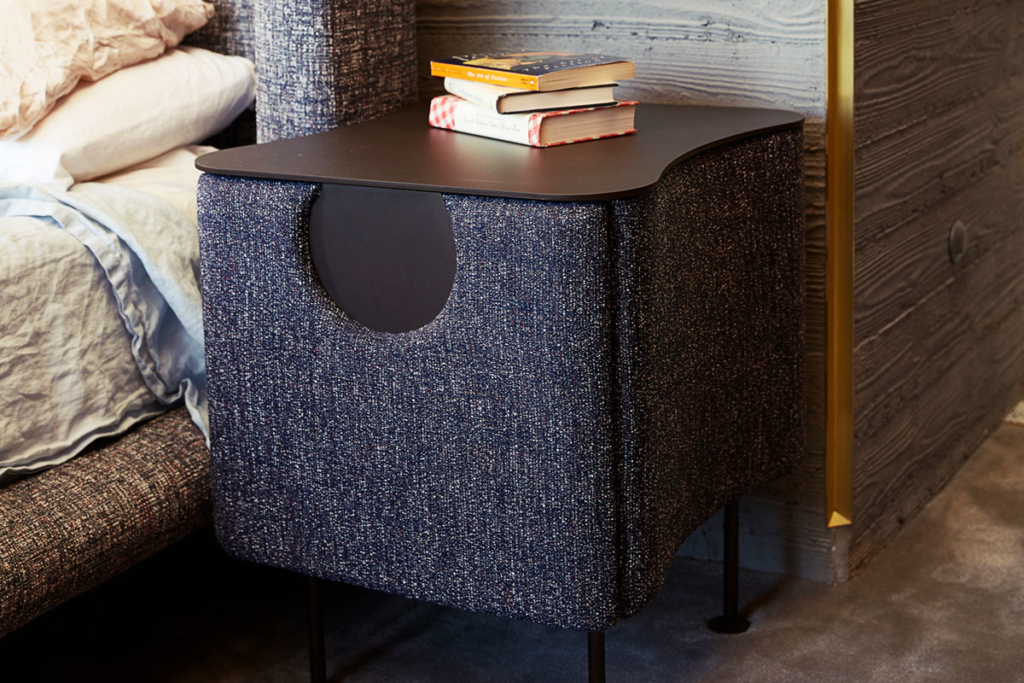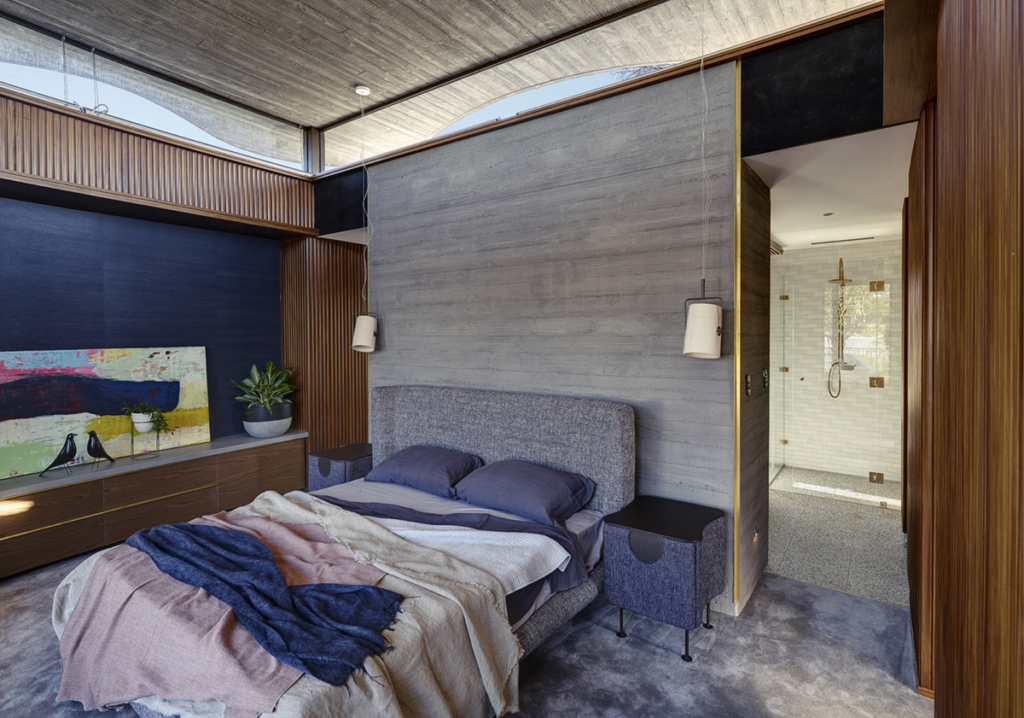The bedside tables are designed to appear as sculptural elements that take their form and reason from what surrounds them. The tables reflect the fluid plan forms of the local iconic City Beach Kiosk building which in tern inspired the house and roof in which these tables belong.
Rather than utilitarian tables, these custom commissioned bedside tables are more like obedient pets sitting hungrily either side of the master bed, awaiting their master to feed them.
Designed for a home where elements within are consistently hand crafted, these bedside tables are an example of the use of traditional crafted materials constructed using contemporary manufacturing processes.
Like the components of the house itself, the bedside tables are designed to appear as sculptural elements that take their form and reason from what surrounds them.
The plan form of the bedside tables takes its cue form the fluid shape of the concrete roof over the master bedroom. The concrete roof itself reflects the fluid plan forms of the local iconic City Beach Kiosk building. In seeking to create a house, interiors, and furnishings that are ‘of their place, this referencing was an important design generator with the intent to create a ‘sense of belonging’. It is important to note that the iconic City Beach Kiosk building was, at the time of the design process, in danger of demolition by the local council. The design of the house and the elements within, such as these bedside tables, stand as a testament to the importance of recognising and capturing a ‘sense of place’.
The bedside tables were also designed to complement the selected master bed and bedhead. The same family of the fabrics of the bedhead was used to choose a complimentary fabric to upholster the sides of the bedside tables. The upholsterer side walls and drawer front are clad over the cabinetwork interior carcass. Both the laser cut profiled top push plate the drawer front and legs are from aluminium.
The fabrication of the bedside tables involved three trades which made for a high level of coordination to achieve the final product.


